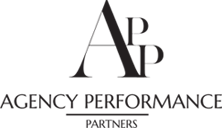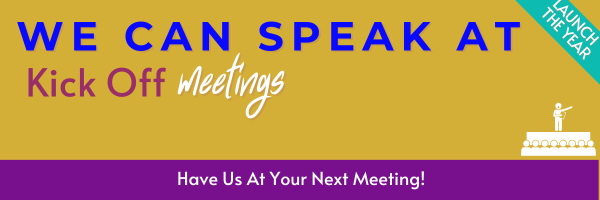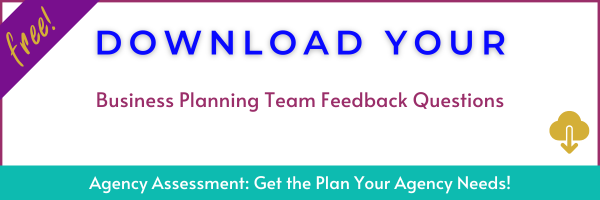Welcome, Agency Leaders! If you’re reading this, you must be ready to design your insurance agency’s roadmap for the coming year.
While an annual business plan sounds like a daunting task, consider it the compass guiding your journey. In this article we will break down what it takes to have a stellar start to the new year.
With this template, you’re about to chart a course that combines strategic foresight with actionable steps. So, get your thinking cap and favorite beverage as it all starts now!
- Executive Summary: This is the 10,000 foot view of your agency’s business plan. Those high level items that are necessary to set a solid foundation for the agency.
- Business Name and Details: Every great story starts with a name. Include your agency’s address, website, and other pertinent details. This is all about you after all…
- Mission and Vision: Beyond profit, why did you embark on this journey? And where do you envision it taking you? This should be more than a word or two. Take some time and think about what is timeless and non-negotiable to your agency. What sets you apart from the competition? What is the agency passionate about? Build your Mission and Vision so that the team has a clear understanding of the agency’s culture. Can they look at the Mission and Vision and understand the agencies WHY?
- Summary of Goals: Your ambitions, condensed. What are the major milestones you’re aiming for? Reach for the stars! Define the next 1, 5 and 10 years. Now go back and review the Mission and Values, do they align with the goals?
- Business Overview: A closer look into where you have come from and what you are great at. Can you summarize the agency to a stranger in an easy to understand way?
- History: Your agency’s origin story. The struggles, victories, and key milestones. What changes has the agency undergone to get to where you are today.
- Services Offered: When speaking with agency owners many of them state that they are a “Generalist”. STOP and take the time to define what you are great at and to also identify areas that you might not be so great at (we will review this further in another section). Every product you offer is a solution to someone’s problem. Detail the key ones you are successful with in this section.
- Target Market: Paint a vivid picture of your ideal client. Think of what you are looking for, almost like a dating profile. “I am looking for someone who…”. From their concerns to their aspirations, who are you great at serving?
- SWOT Analysis: List the internal and external forces shaping your agency’s destiny.
- Strengths: Celebrate your victories! What sets you apart from competitors? Where do you crush it?
- Weaknesses: Transparently identify areas of improvement to foster growth. (Go back and review products offered). What could you make better? Where are your vulnerabilities?
- Opportunities: New potential avenues for expansion or areas underserved by competitors. Take some time to review your competition and see what they don’t do. Is there an area that you want to be great in?
- Threats: External challenges – from market volatility to policy changes – that may require proactive strategies. Can we all shout in unison “Hard Market” or lack of market? What is your competition great at that might be a threat?
- Set SMART Goals: Just like our personal goals, insurance agencies too can go adrift without a structured plan. Enter: SMART goals.
- Specific: Let’s get real. A goal like “Sell more policies” sounds great, but it’s like saying, “I want to travel.” Where to, exactly? Paris? The moon? Be specific!
Instead of “Increase sales.” try “Boost sales of our home insurance packages by 10%.”
- Measurable: Just like not enough pumpkin spice in your latte can be disappointing, so can unmeasured goals. Numbers are your friend.
Swap “Serve clients better” for “Achieve a 95% client satisfaction rate based on feedback forms.”
- Achievable: Shoot for the stars, but also, keep it real. If you’ve never climbed a mountain, aiming for Everest next month might be a stretch.
Old goal “Become the top agency in the country.” New goal “Land in the top 10% of regional agencies based on customer satisfaction.”
- Relevant: Make sure your goals align with what your agency truly needs and is passionate about.
Not-So-Great Idea “Let’s dive into pet insurance.” (if no one’s asked for it). SMART Idea: “Launch pet insurance by Q3, targeting urban pet owners,” but only if you’ve identified that need!
- Time-bound: Ever pulled an all-nighter because you procrastinated? Yep, deadlines matter. Give your goals a due date.
From “Sell more auto policies.” to “Sell 200 more auto policies by year-end.”
- Marketing and Sales Strategy: How will you attract and retain clients? A clearly defined company culture should almost speak for itself. Take off the Insta-Filter and acknowledge the day to day of agency life.
- Marketing Objectives: Clear goals such as enhancing brand awareness or boosting client engagement. If you don’t have a clear objective you will not be successful with your marketing.
- Strategies: What will you do to make the Marketing Objectives happen? Tactical methods like content marketing, partnerships, or community events.
- Sales Forecast: Using past data and market trends, estimate your growth trajectory. Are you clearly tracking lead sources and closing ratios? If not you MUST create a plan to get this on track.
- Financial Plan: Define what financial success looks like for the agency. Review best practices and set standards for spend categories, then review monthly.
- Budgeting: Pull the historical Profit & Loss reports by month, quarter and year. See how well your expenses are tracked and categorized. You might need to take some time to clean this up and recategorize. Then estimate your expected expenses, from staffing costs to technology upgrades, detail every projected expense.
- Projected Revenue: Combining your sales forecasts with pricing strategies, how much do you plan to earn? Look at your income from all sources such as commissions, contingencies, agency fees, and other services you offer. Review retention numbers vs. rate increases. Then plan for the next 12 months.
- Break-even Analysis: At what point can you expect to cover costs and start turning a profit. This should be thrilling! Knowing where you need to be to make the $$. What will you do when you can define profitability?
- Operational Plan: Processes, Procedures & People. This is the mechanics of your agency’s daily operations.
- Agency Staffing: Clarity is Kind, set Key Performance Indicators for each role as well as expectations for responsibilities. Review leadership structures, job descriptions, reporting chains, and departmental flows. You will fail without clearly defined expectations.
- Client Management: Define your client journey, from inquiry to policy renewal. What needs to happen at each client touchpoint? Are there different levels of service based on account size or premium? If so, define it. Set standards that the team is accountable to.
- Supplier and Partnerships: Outline your key collaborators and terms of engagement. Do you need to consolidate markets or find new ones? What are the partnerships that you cannot live without and how will you keep the relationship alive?
- Human Resources Plan: Your team is your most valuable asset. Take a step back… Look at each person with a fresh perspective. Look at the facts not feelings. How are you going to nurture and grow your team?
- Current Team: Spotlight your team’s expertise, roles, and unique strengths. Is this defined in the culture of the agency? Do the job descriptions align with the strengths?
- Recruitment: What is your current hiring process? (You might need to dust off the binder that is on the bottom shelf) Define the process for posting, interviewing and hiring. Look at future staffing needs. List projected hiring dates and desired qualifications.
- Training and Development: Do you have a solid onboarding process that includes knowledge check points? What are the agency’s ongoing education plans to keep your team at the forefront of industry knowledge. A strong, smart agent is priceless!
- Risk Management: You didn’t think we’d forget this, right? After all, we’re talking insurance! Preparing for the uncertainties. What do you need to do to be unstoppable?
- Identification: From data breaches and natural disasters to economic downturns and loss of market access, list potential risks.
- Strategies: Create robust countermeasures to ensure business continuity. This could include clear social media policies or an emergency response plan.
- Milestones and Timelines: What isn’t measured isn’t achieved. This is your annual goals, broken down. What does success look like and when is it time to reset those expectations?
- Quarterly Goals: Streamlining your ambitions into actionable quarterly targets. Define what steps are needed to complete each part of the plan and what finished looks like. A car with no engine is still a car, small details matter.
- Progress Tracking: Implement regular checks, ensuring you’re on track or understanding if pivots are needed. Maybe even a bi-weekly meeting with stakeholders to review progress and roadblocks!
11. Conclusion and Next Steps: What are your next steps? Is there an immediate to-do?. Recap and prioritize.
- Summary: Reinforce the essence of your plan, reminding the stakeholders of the agency of its importance. Be clear in your expectations.
- Immediate Actions: Create a checklist of what’s urgent and essential. Assign responsibilities and deadlines.
Bonus Section: How to stay On Track: Here are some quick tips on how to stay on track with your agency’s goals!
- The Power of Regular Check-ins: You know that friend who checks in on you after you’ve shared some personal goals, asking how you’re progressing? That’s the kind of buddy we all need in our professional lives, too. Insurance agencies should set monthly or quarterly reviews. During these sessions, look at the milestones achieved, the hiccups encountered, and how they align with the year’s objectives. This keeps goals fresh in everyone’s mind and ensures that the ship is steered in the right direction.
- Visualize the Progress: Ever noticed how the progress bar during software updates keeps you from shutting down your computer? A visual representation of your goals can work similarly. Charting the progress of goals on walls, dashboards, or in monthly newsletters can be motivating. When everyone in the agency can see where they stand, it brings an element of collective responsibility.
- Engage Everyone in the Process: Goals shouldn’t just be the concern of top-level management. From the front desk to the back office, everyone should feel invested in the journey. Having regular team meetings where departments share their progress and challenges can foster a sense of unity. The more individuals feel their role impacts the broader goals, the more motivated they’ll be.
- Celebrate the Small Wins: While the annual goal might be the big trophy we’re all eyeing, there are many little victories along the way. Perhaps it’s a new policy type launched or a client feedback system successfully integrated. By celebrating these mini-milestones, you keep the momentum going. Plus, who doesn’t love a little celebration?
- Embrace Adaptability: Here’s a twist – sometimes, despite our best planning, we realize midway that a goal might need some tweaking. And that’s okay! Being adaptable doesn’t mean you’re giving up on accountability. It just means you’re nimble enough to navigate the unpredictable waters of the insurance world. If a goal needs reevaluation, do so with the same vigor as when you set it.
- Learn from the Misses: Not hitting a quarterly target doesn’t mean throwing in the towel. Instead, use it as a learning experience. Sit down with your team and analyze what went astray. Was it an external market shift? An internal communication lapse? Identifying these will not only provide solutions for the current situation but also help in setting more accurate goals in the future.
- Use Technology Wisely: We live in the tech era, and insurance agencies have at their disposal countless tools to track, evaluate, and project. From CRM systems that offer insights into client behaviors to predictive analytics that can forecast market shifts, leverage them. They can act as that extra pair of eyes, ensuring you’re on track even when human oversight might falter.
In Conclusion, annual goals are a guide, providing a path to growth and progress for insurance agencies. While setting them is a thoughtful process, staying accountable to them requires persistence, collective effort, adaptability, and a pinch of tech magic.
So, as you sip on that coffee and reflect on the year, remember – every goal, big or small, is a step towards a larger vision. Cheers to staying accountable and achieving them!





